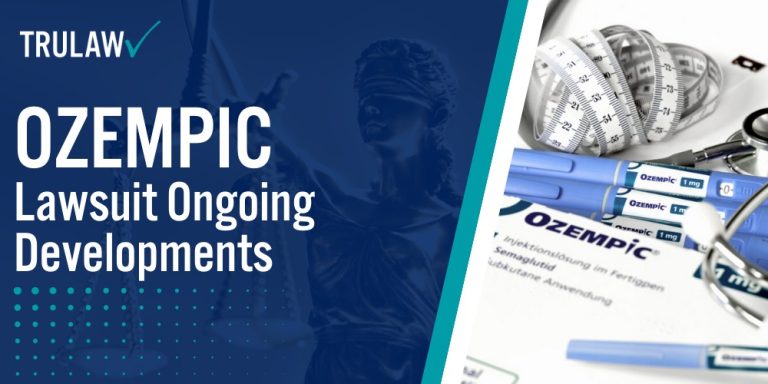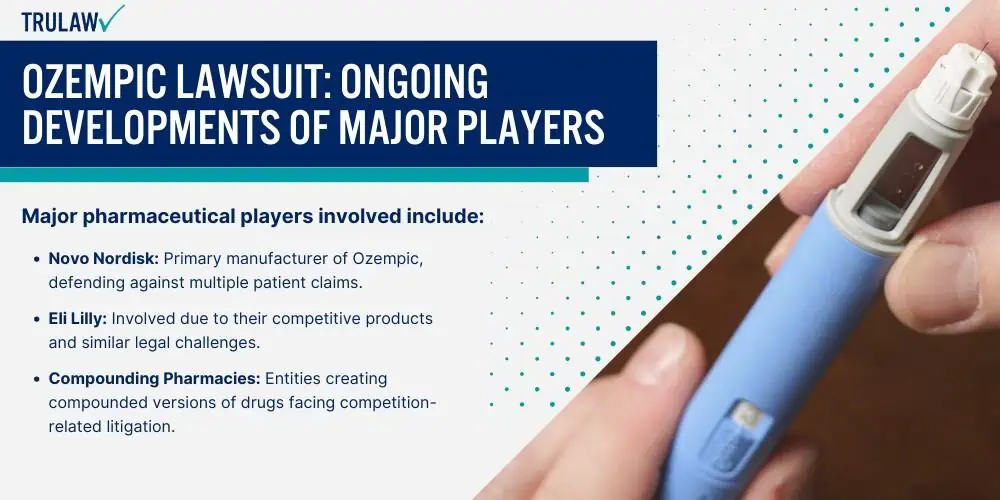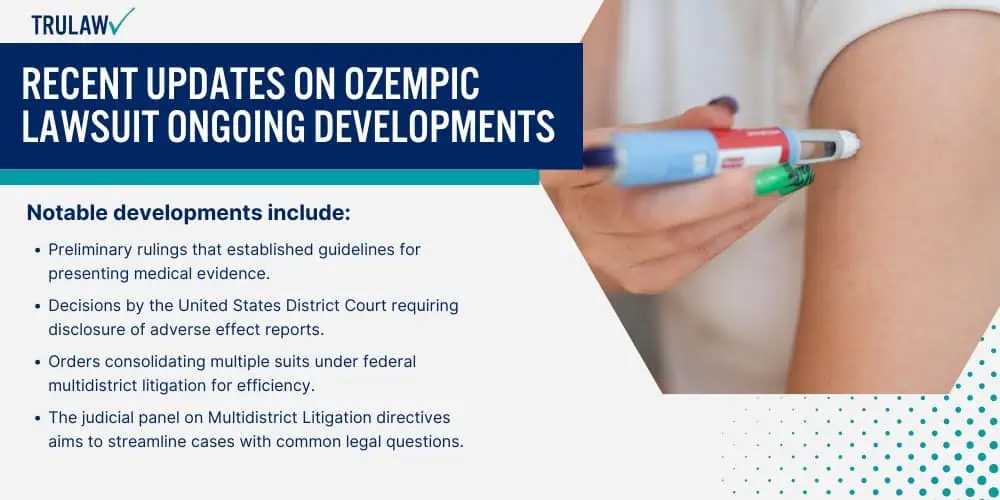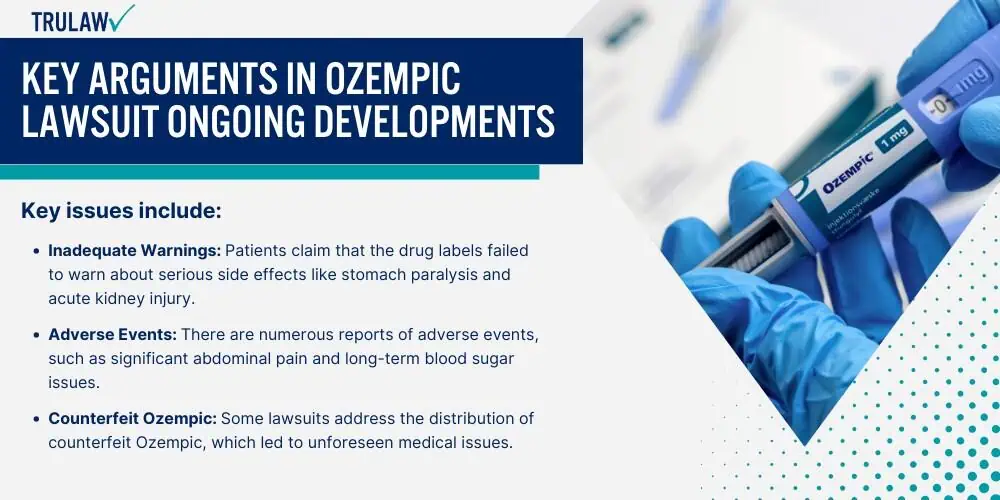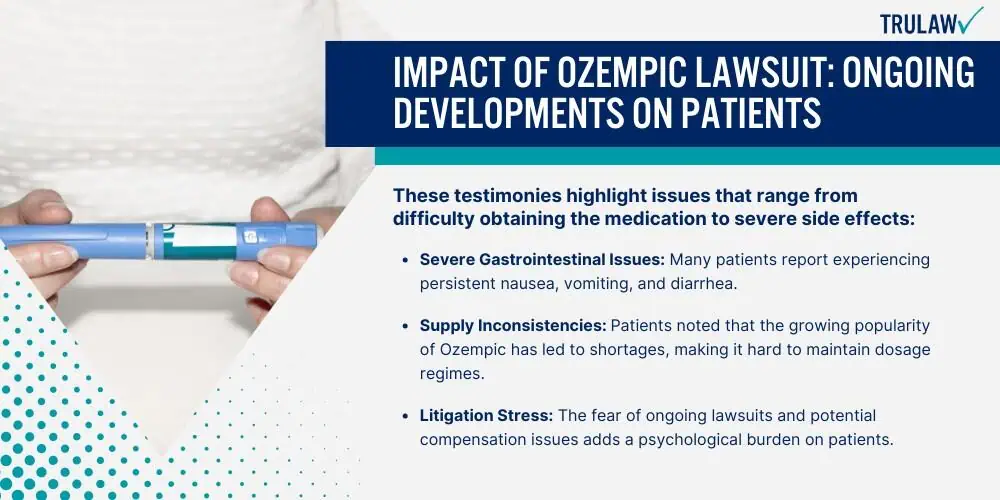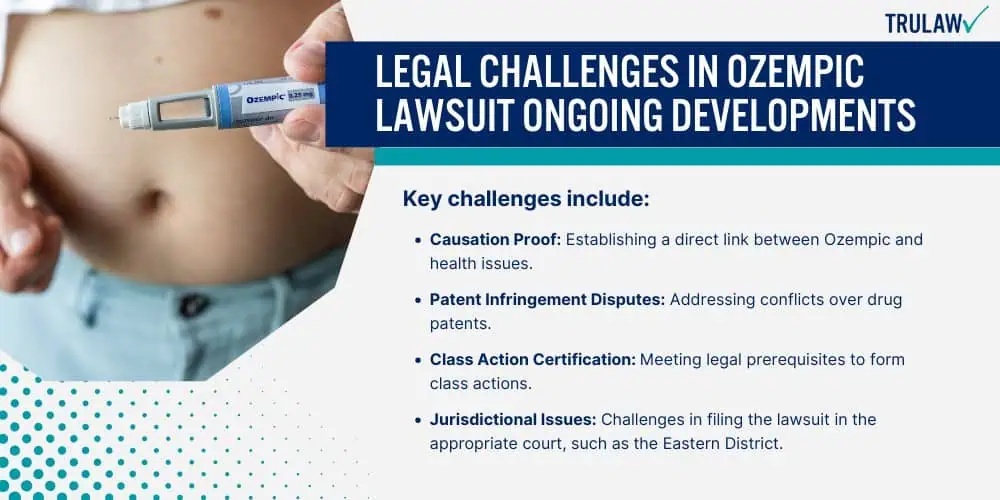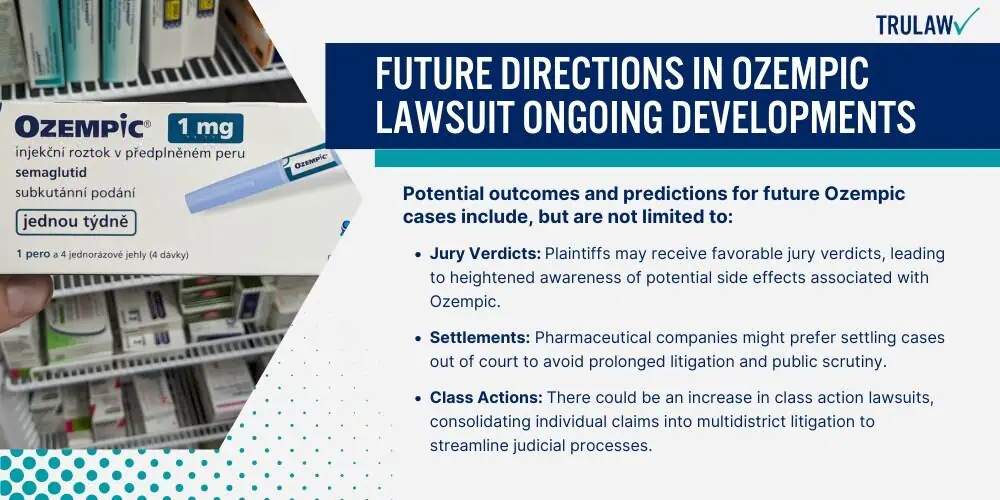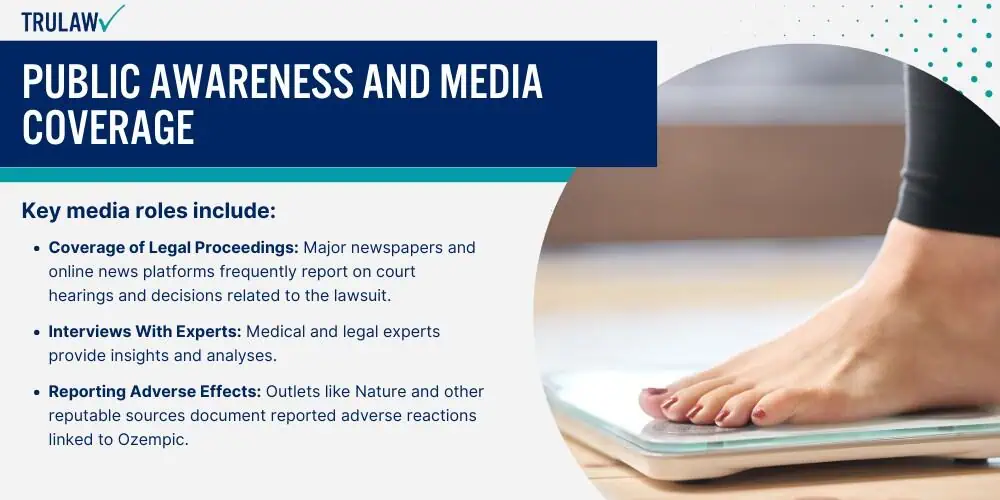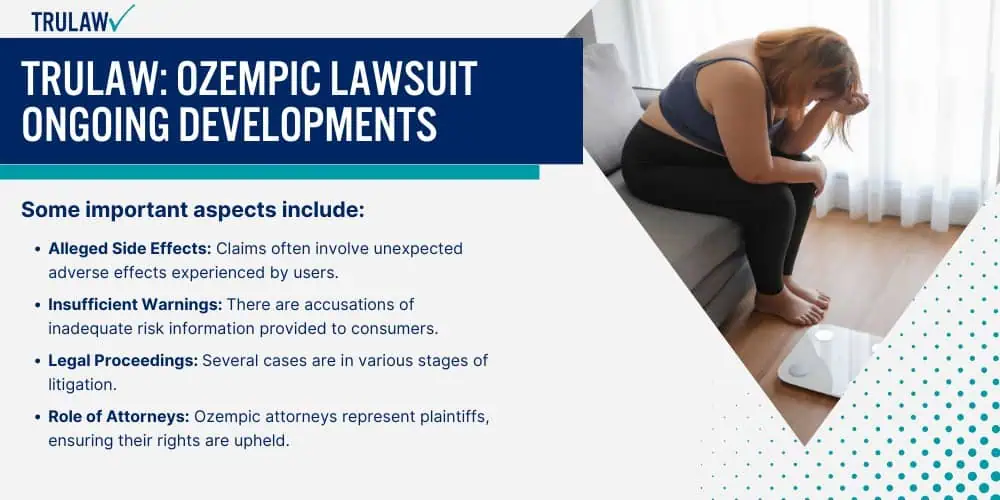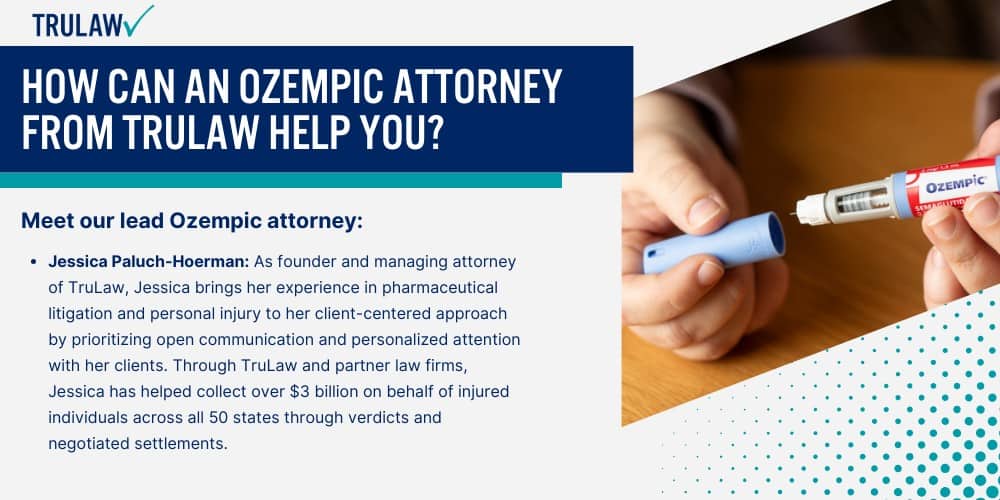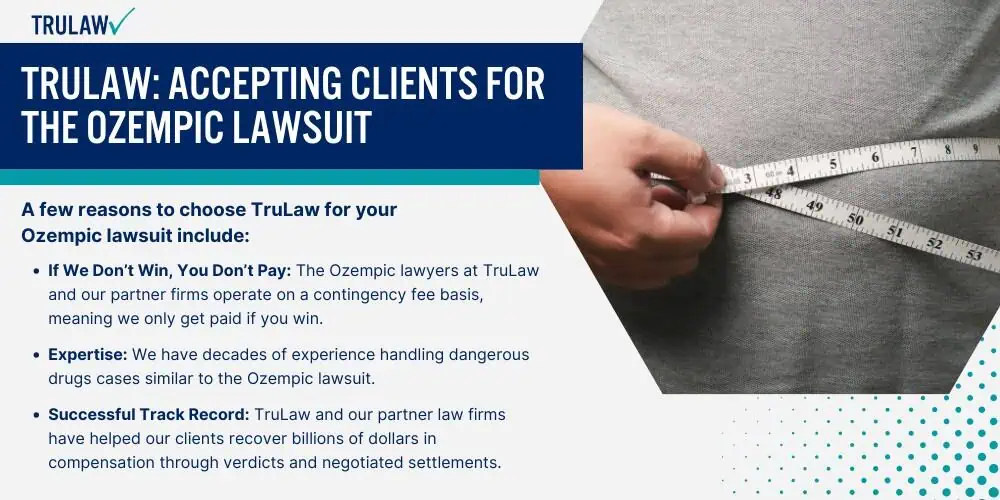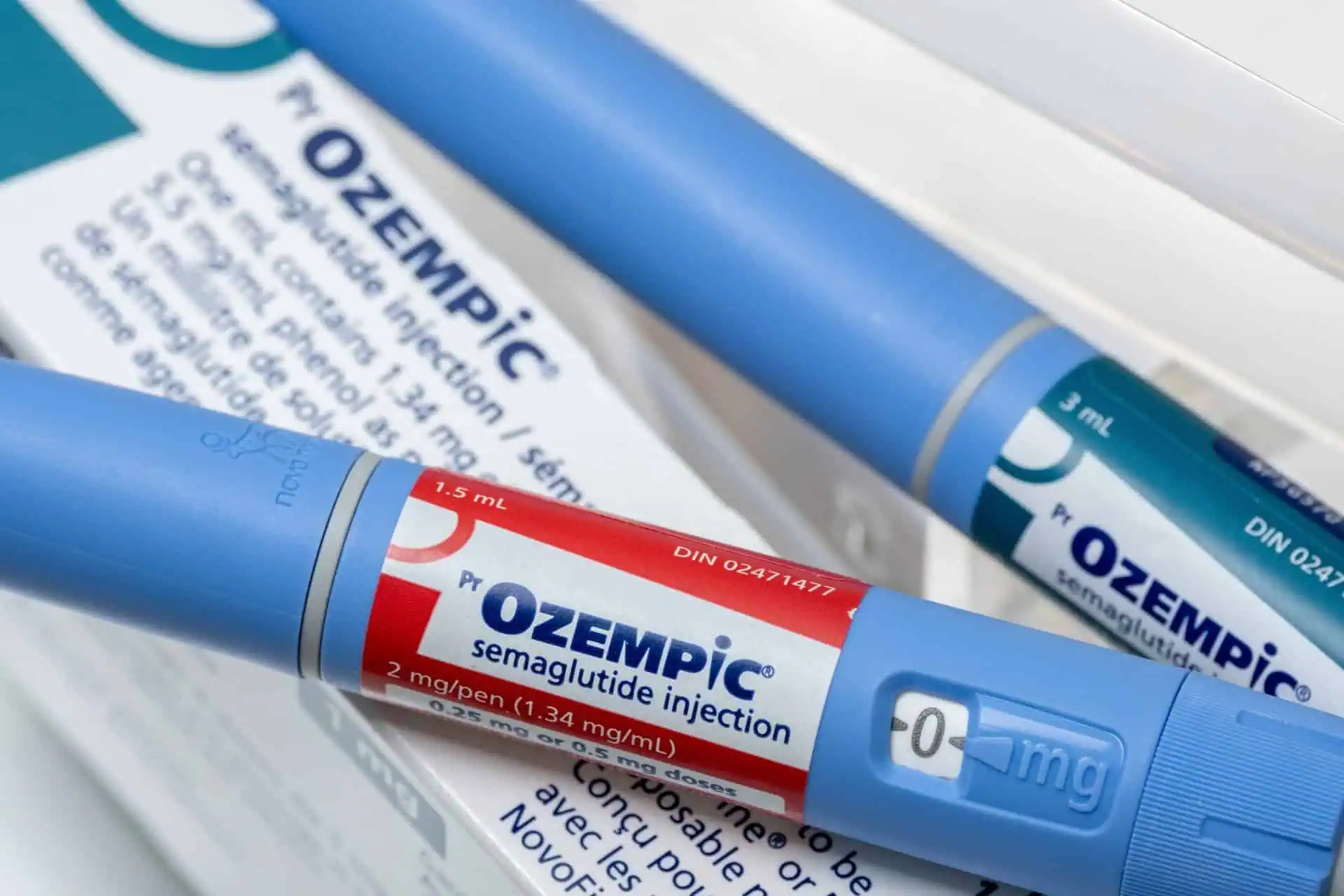Ozempic, a medication used to manage type 2 diabetes and obesity, has faced legal challenges due to side effects and labeling issues.
This has led to class action lawsuits involving patients who have experienced severe medical problems.
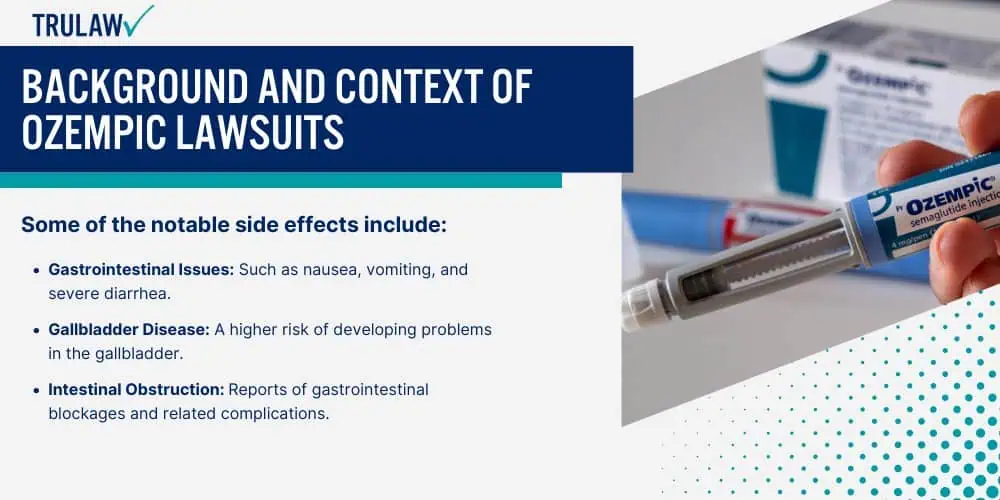
Ongoing legal battles around Ozempic revolve around several key issues, including patent disputes, regulatory challenges, and class action lawsuits.
Key points cover specific aspects such as plaintiffs, allegations, and the scope of Ozempic litigation.
What is Ozempic? Drug Uses and Side Effects
Ozempic is a brand name for semaglutide, a medication that mimics the effect of the glucagon-like peptide-1 (GLP-1).
It’s primarily prescribed for managing type 2 diabetes and aiding in chronic weight management.
It helps control blood sugar levels and has been shown to assist with weight loss in clinical trials.
However, taking Ozempic can result in several side effects.
Some of the notable side effects include:
- Gastrointestinal Issues: Such as nausea, vomiting, and severe diarrhea.
- Gallbladder Disease: A higher risk of developing problems in the gallbladder.
- Intestinal Obstruction: Reports of gastrointestinal blockages and related complications.
- Severe Gastrointestinal Issues: Persistent and severe abdominal pain.
Note that these side effects have prompted discussions on the adequacy of Ozempic’s warning label.
Origins and Reasons Behind the Ozempic Lawsuits
The Ozempic lawsuits primarily revolve around claims that the drug manufacturers failed to adequately warn patients about the potentially severe side effects of the medication.
Legal challenges emerged from the following issues:
- Lack of Disclosure: Allegations that manufacturers did not disclose all possible side effects.
- Inadequate Warning Labels: Assertions that the warning labels did not sufficiently outline the risks, including gastrointestinal problems and gallbladder disease.
- Unreported Clinical Trial Results: Concerns that some clinical trial outcomes related to side effects were not adequately reported.
- Misleading Marketing: Claims that the benefits of weight loss and chronic weight management overshadowed the medication’s risks.
These lawsuits are significant because they highlight the balance between the benefits and risks associated with diabetes medications like Ozempic and underscore the medical and scientific issues surrounding its safety profile.
